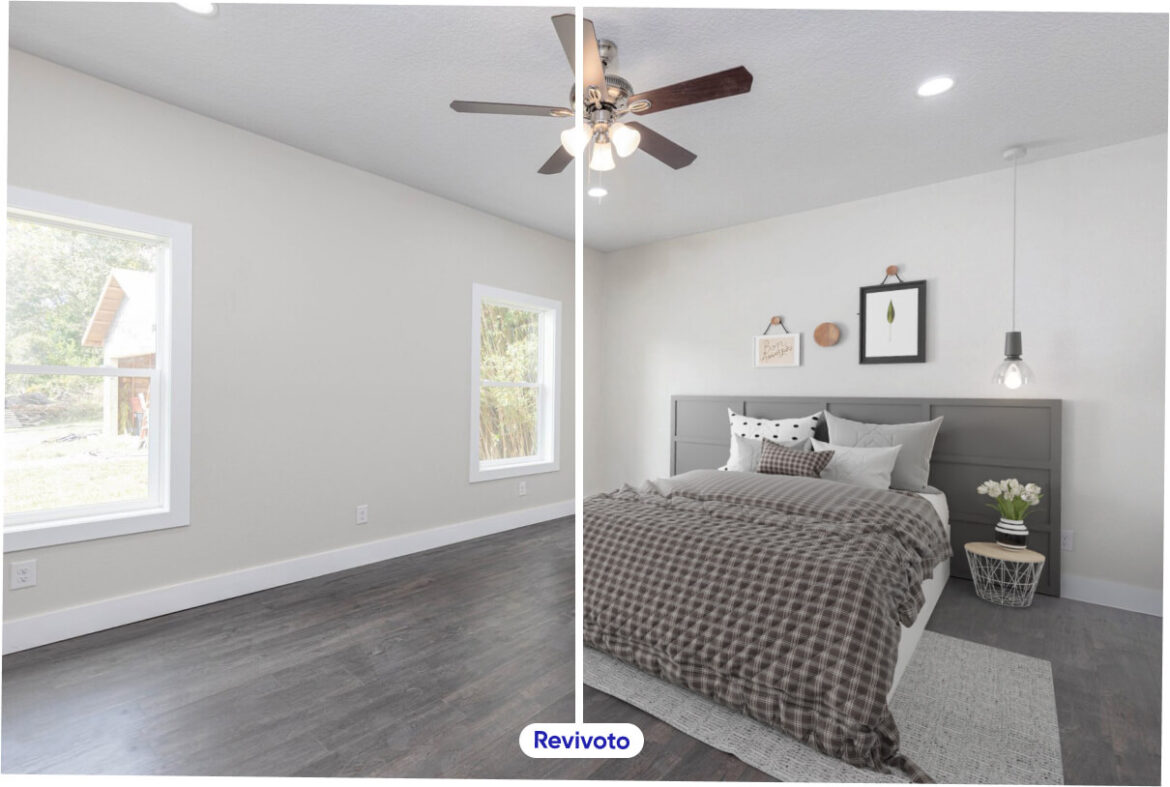It’s critical that your home stands out and impresses potential buyers in today’s competitive housing market. When it comes to selling your home, staging can make all the difference. And while it may appear as simple as adding a few new items of decor, it involves much more.
The typical staging procedure entails adding, removing, or rearranging furniture, as well as paying great attention to the home’s details and decor. Sellers and brokers have been more reliant on virtual home staging in recent years to highlight a property’s potential. More than two-thirds of buyers’ agents and one-third of sellers’ agents claimed that staging a property boosts the offer price by up to 5% above un-staged comparable properties.
According to the survey, staging reduces the time a house is on the market by more than half. However, there are several practices that will help this process run more smoothly, both technically and ethically.
Real estate virtual staging comes with a strict set of dos and don’ts. Here are a few points that summarize the dos and don’ts of virtual staging.
Table of Contents
Top Dos of Virtual Staging in Real Estate Marketing
Virtually staged real estate listings have been shown to sell more quickly and far above their asking prices. When staging a house virtually, keep in mind that the photos should depict the house as it would seem to buyers who visit the place in person.
Utilize virtual staging to display vacant room features
Use virtual staging for empty properties with uncommon or niche flex areas that might be used as an office, a playroom for children, a yoga studio, an exercise room, or even a gaming room since these spaces need specialized furniture and are expensive to rent.
Outdoor areas might benefit from virtual staging as well. Since these cozy living spaces are becoming essential to today’s customers, adding patio furniture, potted plants, carpets, and décor to create external living and entertaining spaces can make a significant impact.
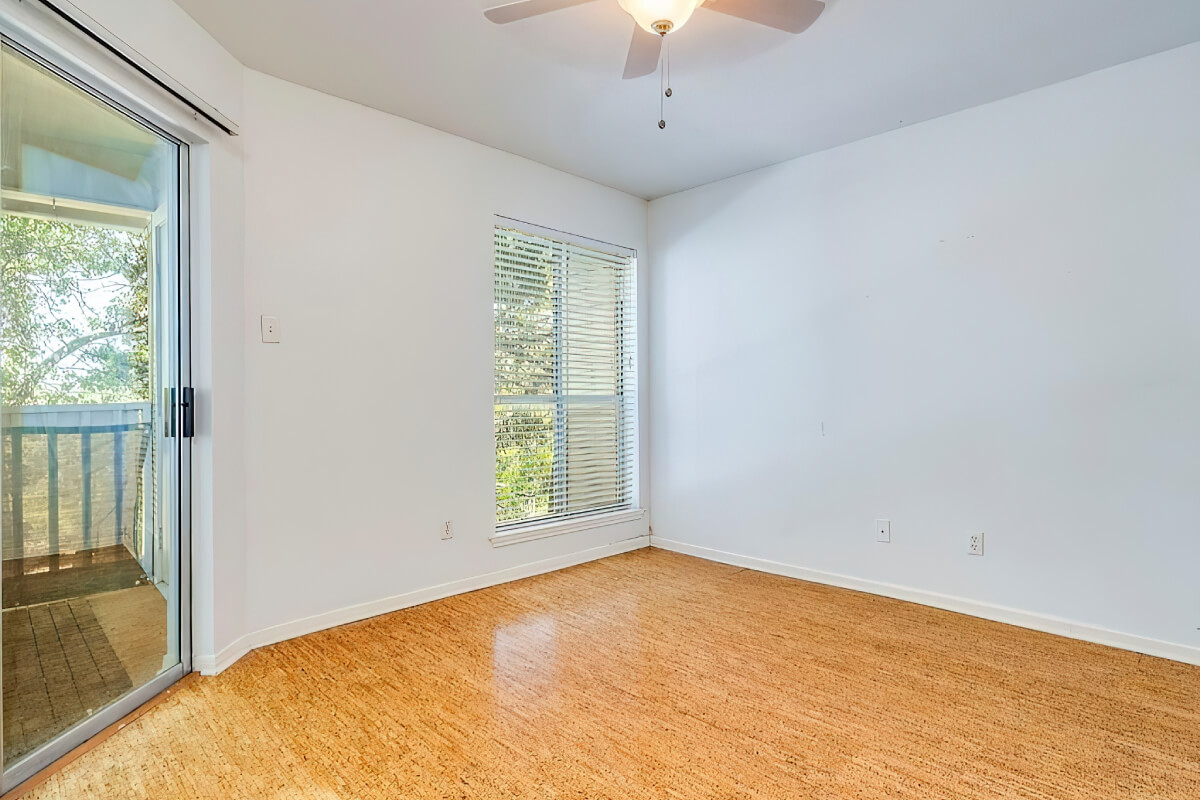

Perform updates before putting your property on the market
Before putting your house on the market, make some improvements. We frequently recommend repainting the interior of the property in a fashionable neutral hue and replacing outdated light fixtures. These factors will increase homebuyer demand for modern, move-in-ready homes that meet their desired lifestyle.
Take the best photos of your property
High-quality images definitely leave a strong impression on potential buyers. This is your one opportunity to showcase the greatest characteristics of your property. Photographs generate a lasting impact and pique the curiosity of prospective buyers sufficiently to entice them to visit the property in person.
Take chest-level shots of the rooms and a few alternative viewpoints to give the stagers a strong starting point. Each photograph should capture a well-balanced floor-to-ceiling ratio, allowing adequate space for the stagers to add the right furniture. Finally, they should shoot the house as though it had been conventionally staged or adorned.
Be honest and ethical when it comes to virtual staging
Virtual staging aims to highlight the greatest features of a property and assists potential buyers in envisioning themselves living there.
Virtual staging should consist solely of adding (or deleting) furnishings and accessories to photographs. Additionally, you should inform buyers and brokers that the property has been digitally staged.
Use images in all marketing materials
Use digitally staged images for realtor flyers, brochures, and other marketing materials. You can also print and mount physical copies to display at the empty listing to demonstrate the possibilities of each space and how they might arrange their furniture.
Choose the furniture and décor based on the style of the property
You might go overboard in an attempt to declutter or depersonalize a property. Digitally inserting sleek, contemporary furnishings in a rustic cabin, for example, may put off homebuyers. As you virtually stage the house, think about the preferences and requirements of the buyer.
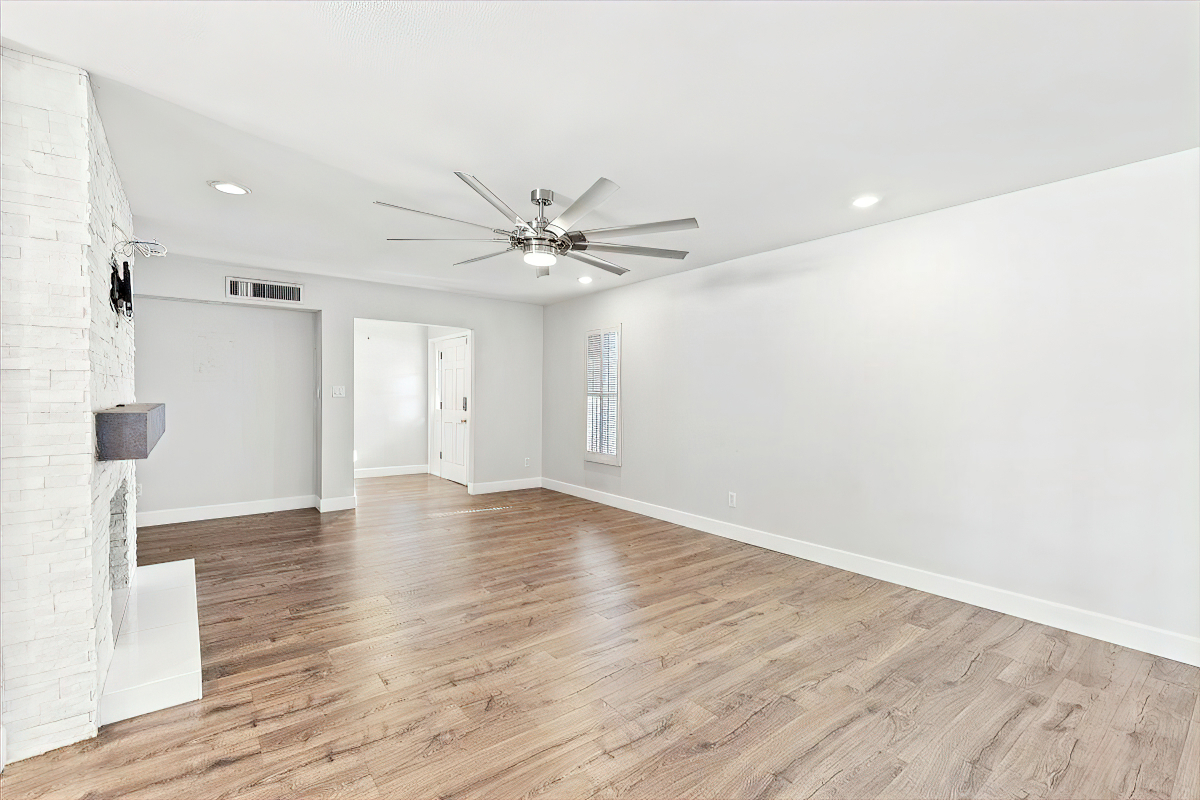
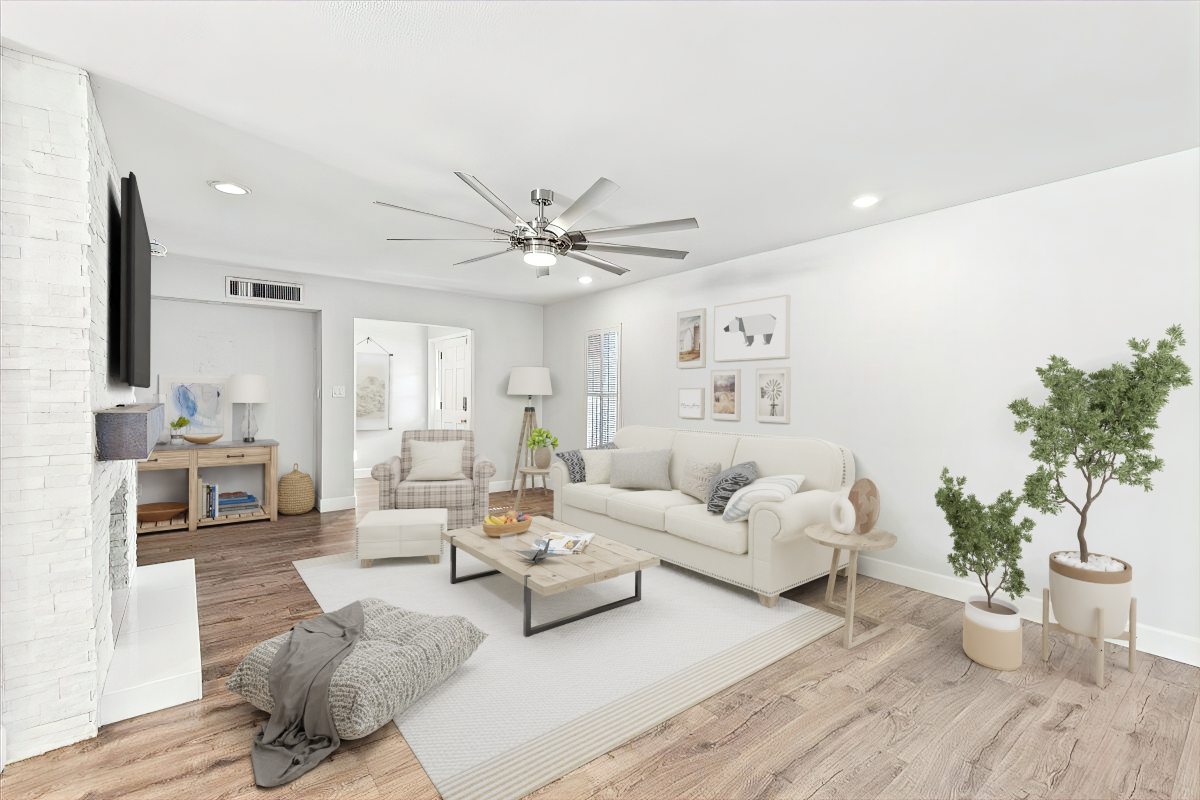
Farmhouse style real estate virtual staging
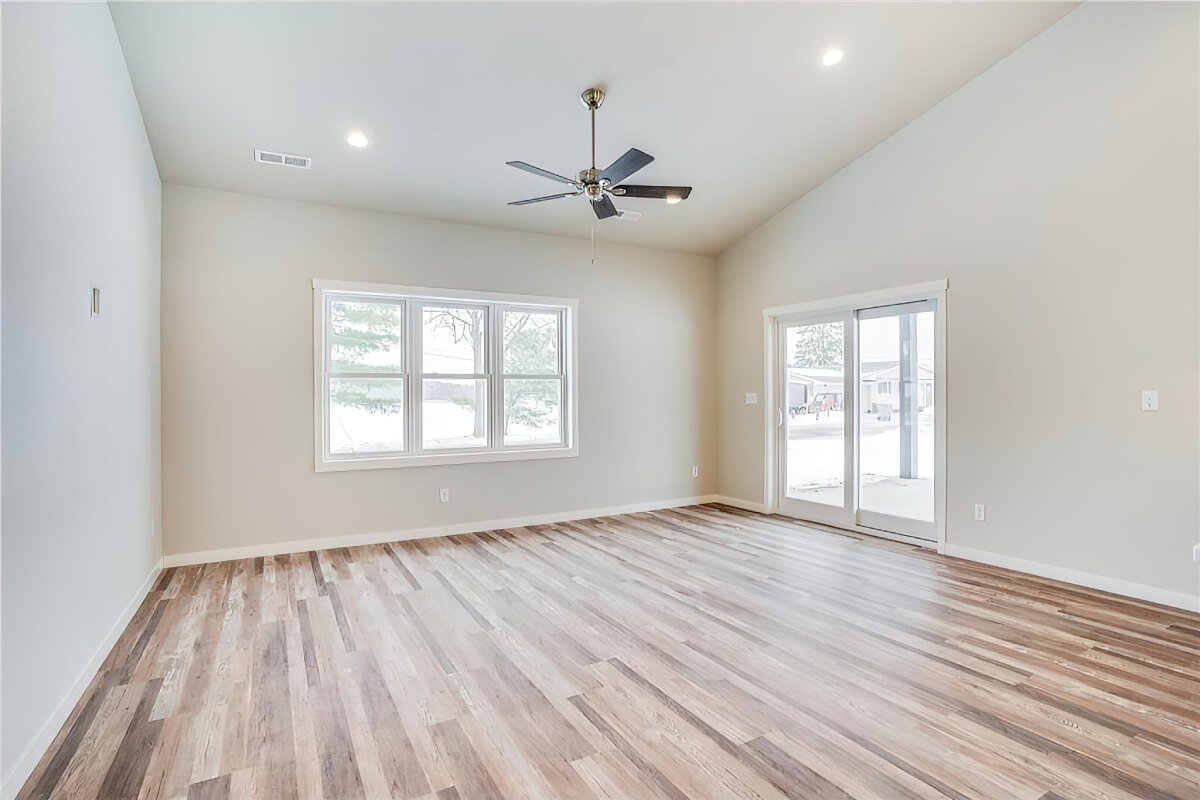

Hampton style real estate virtual staging
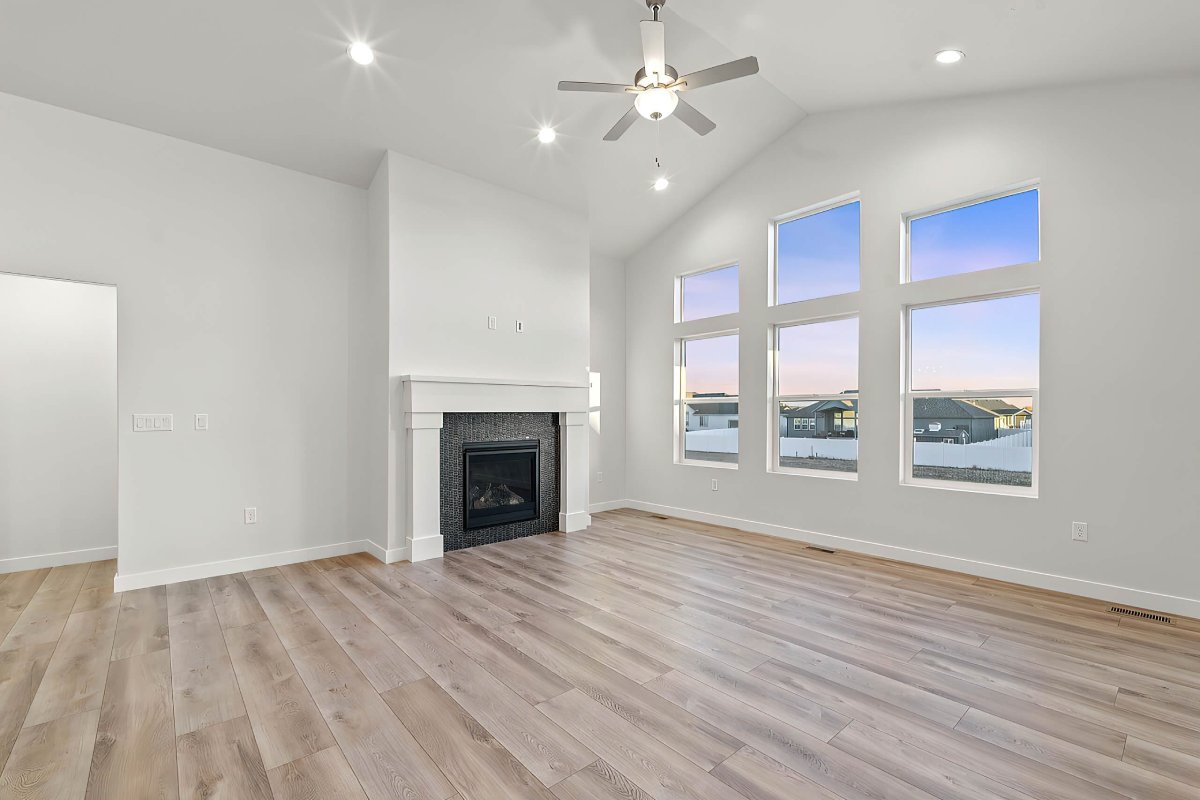

Modern style real estate virtual staging
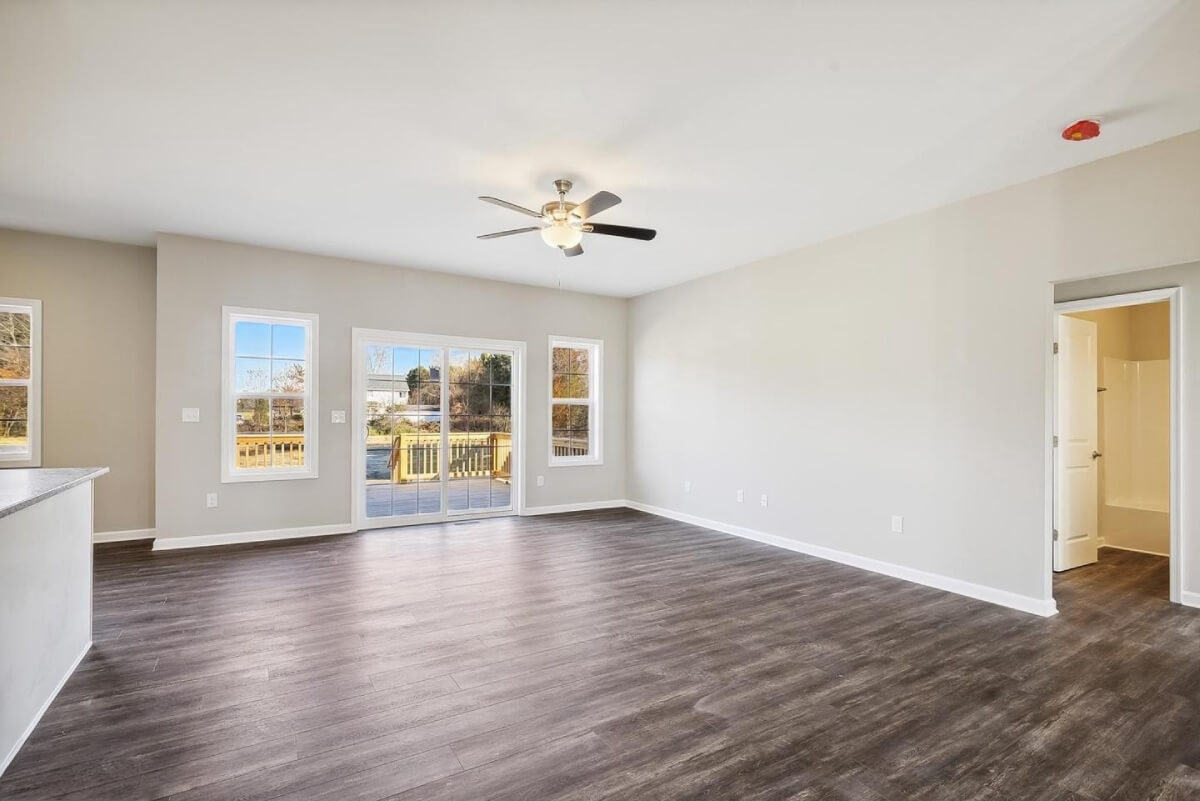
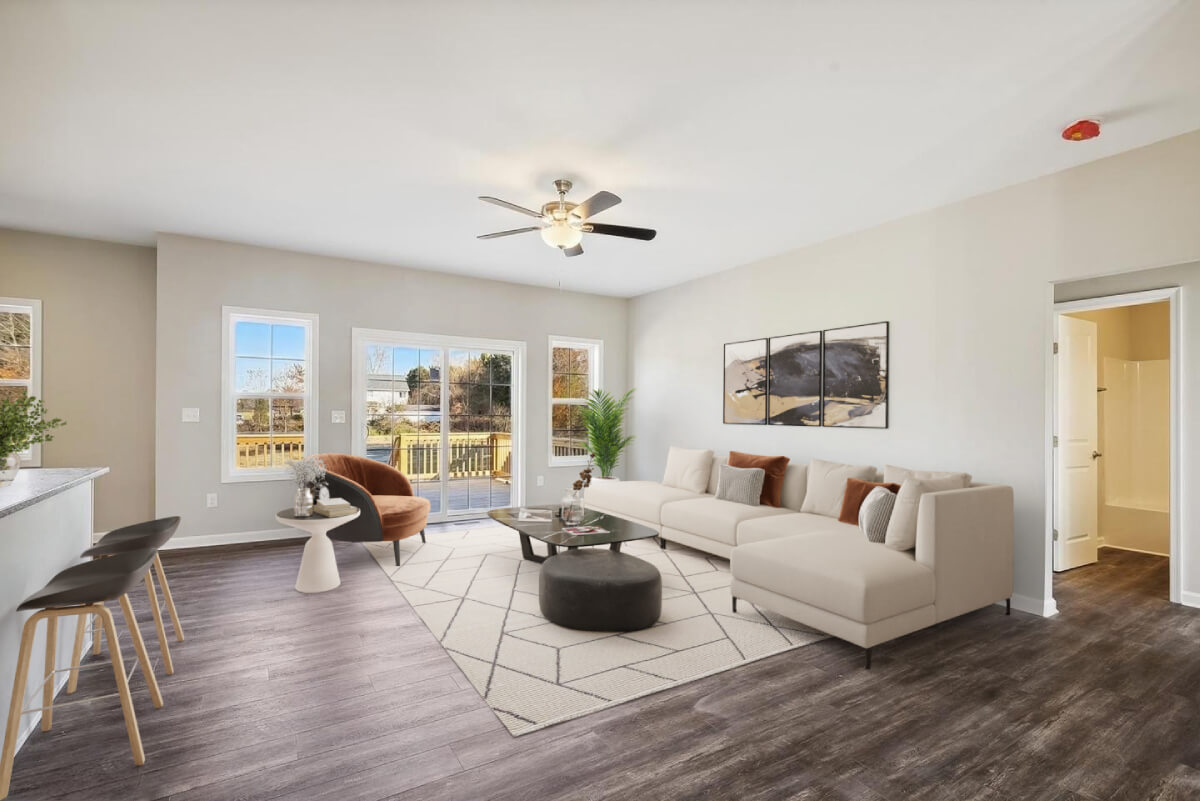
Contemporary style real estate virtual staging
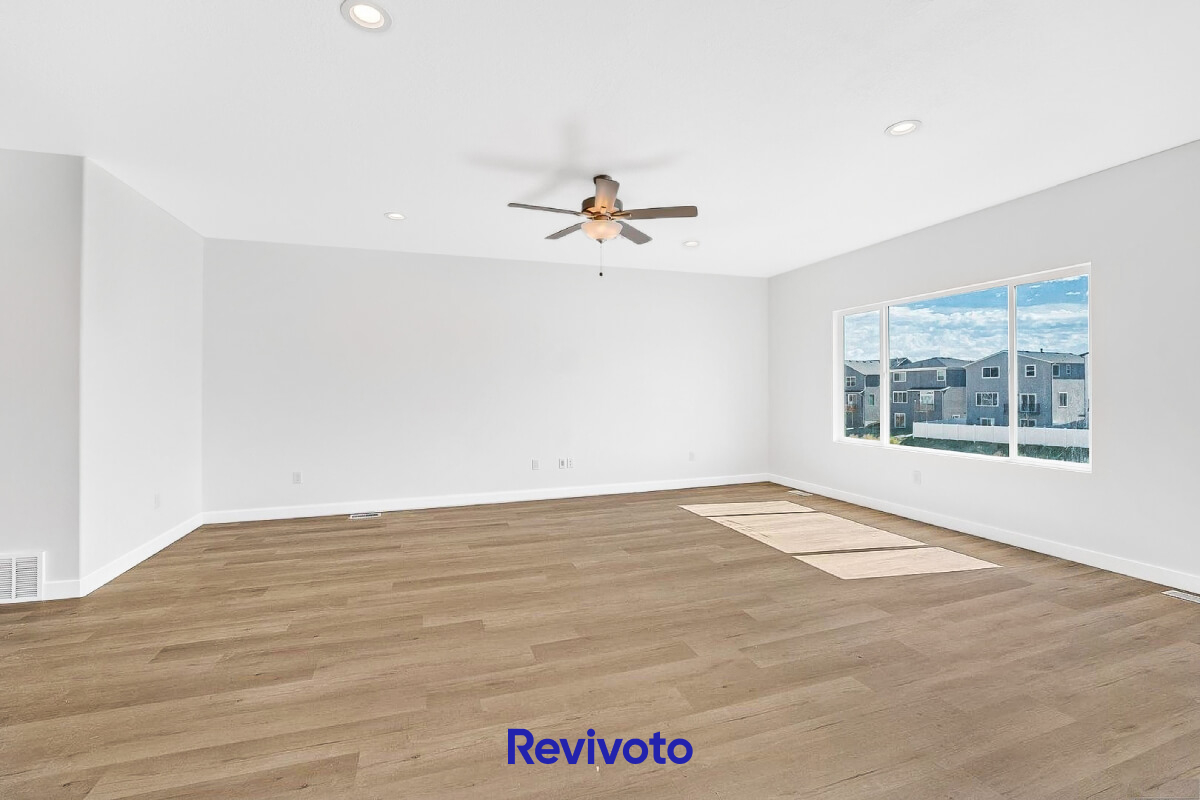
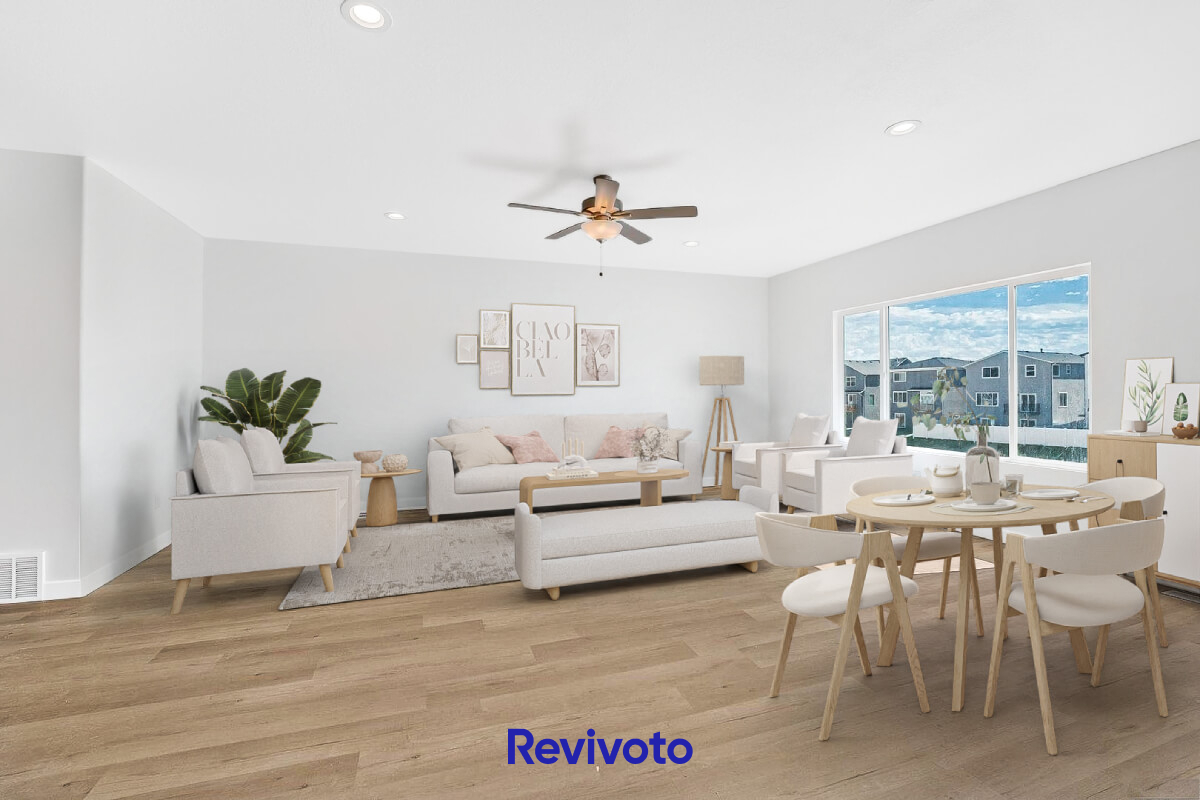
Scandinavian style real estate virtual staging
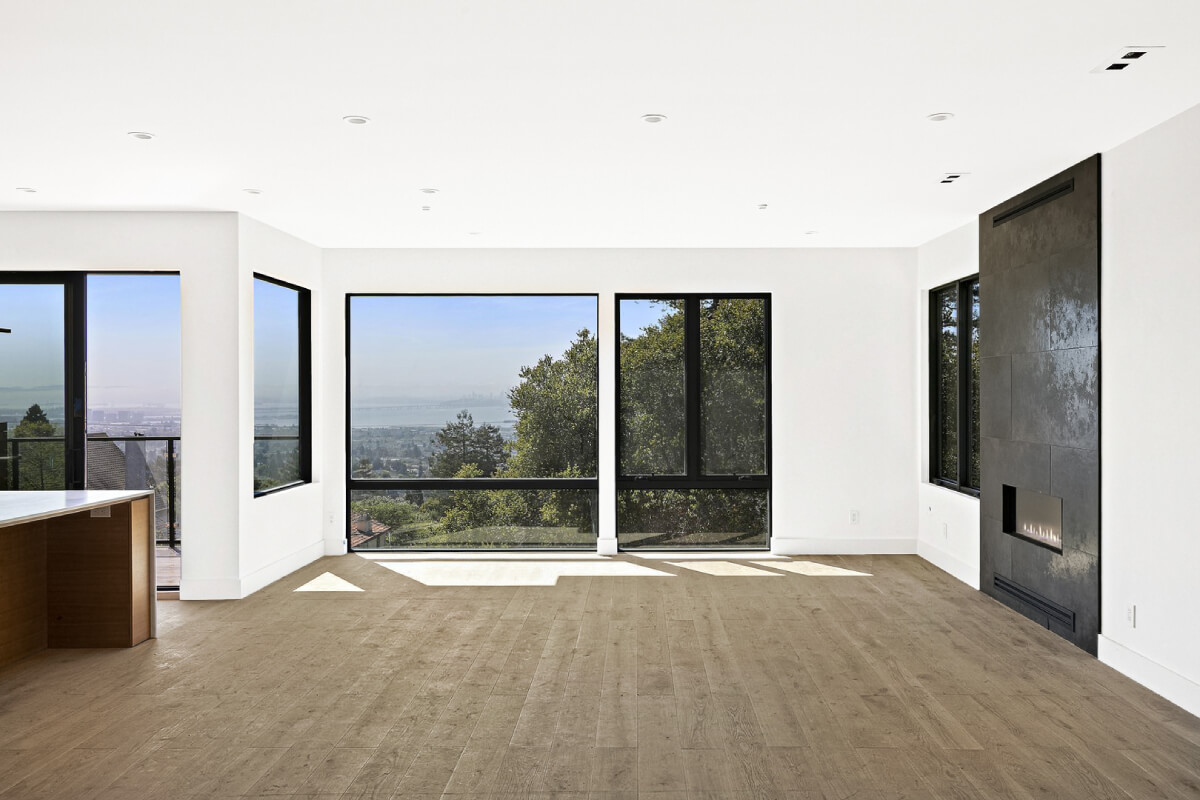
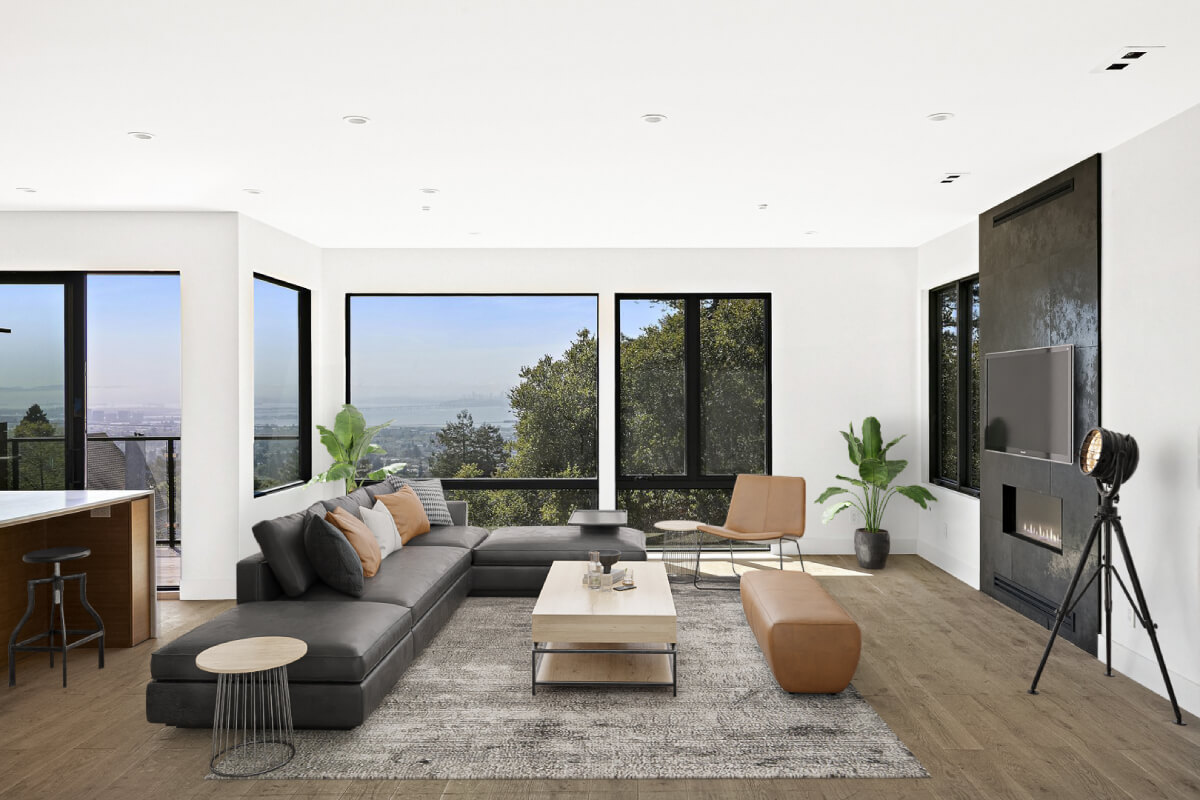
Industrial style real estate virtual staging
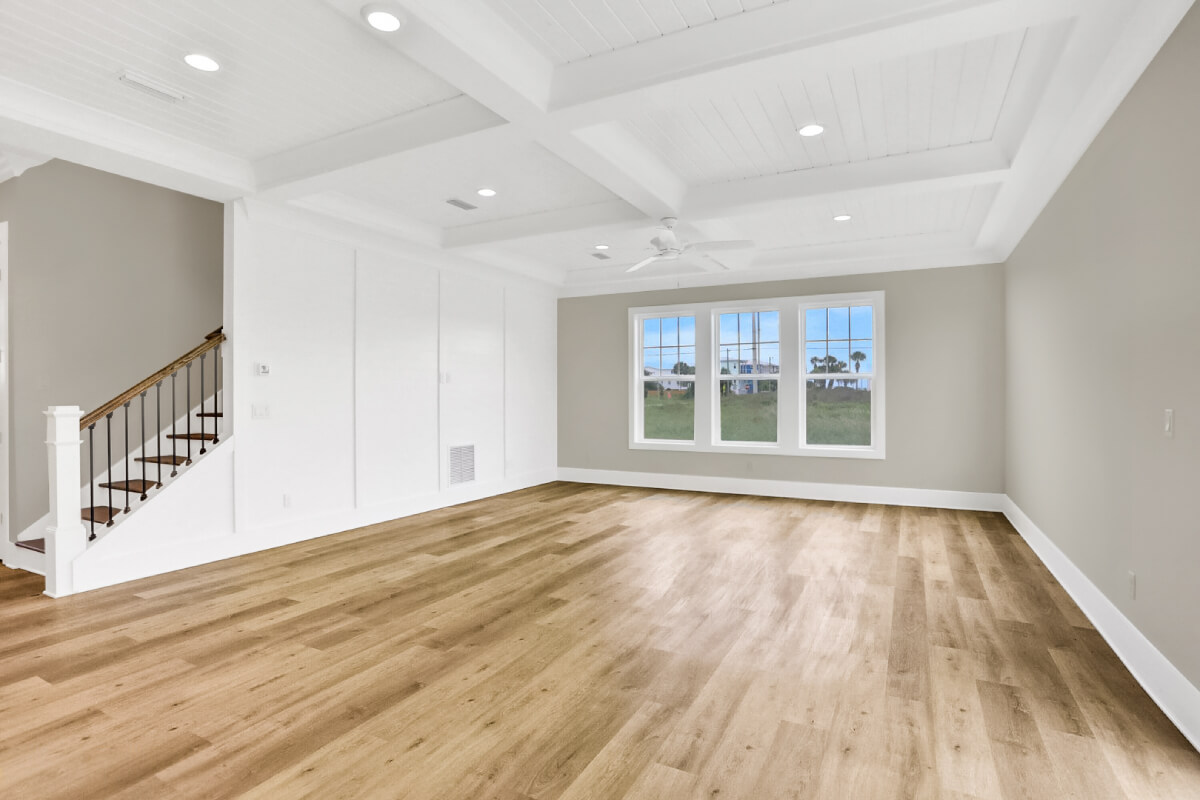

Traditional style real estate virtual staging
Decorate the walls and the floor
The appearance of empty walls might be dull! Additionally, simple artwork may help make a place more appealing. Consider digitally hanging a wide-screen television on the wall of a living room, for instance.
With virtual staging real estate, you can dress up uninteresting flooring by adding carpets. Rugs can infuse a space with warmth, charm, and a splash of color. Additionally, a vase of flowers or a bowl of vibrantly colored fruit might be used to complete the look.
Don’ts of Virtual Staging in Real Estate Marketing
Your real estate marketing must always include honesty as a non-negotiable component. With so many people buying houses without seeing them, you must be careful that your virtual staging does not go too far in creating a place.
Do not discard the vacant photographs
To further impress your target market, include “before” images of the house with “after” photos that have been virtually staged.
This approach is also helpful in showing a room as two distinct areas, such as a bedroom in one shot and an office in another.
Avoid concealing or misrepresenting issues
Virtual staging must not deceive the homebuyers in any manner. For example, digitally altering the color of the walls or the substance of the kitchen counter, is immoral. Buyers should be able to see how they wish to decorate the space rather than being bombarded with your vision. Therefore, it is better to keep things simple while staging a property.
Avoid using virtual staging services that alter the color scheme, move walls, install new appliances, or change the flooring. This is computer-aided architectural rendering, not virtual staging, and it should only be used to show homeowners how to repair or redesign a place. Virtual staging should only involve adding furniture and décor to photographs of empty rooms. In other words, installments cannot be changed in virtual staging.
Do not utilize virtual staging to conceal defects in the house
Whether it’s a ceiling stain or broken flooring, it’s not a good idea to hide house flaws using virtual staging. This also applies to the outside of a property and its surroundings.
Do not overlook the outside
Speaking of the outdoors and exteriors, make sure not to ignore their importance.
Online home purchasers examine photographs with a critical perspective. You can utilize virtual staging to add some life to your space by adding trendy tables, chairs, and vibrant flowers to the front door to add to its charm and beauty.
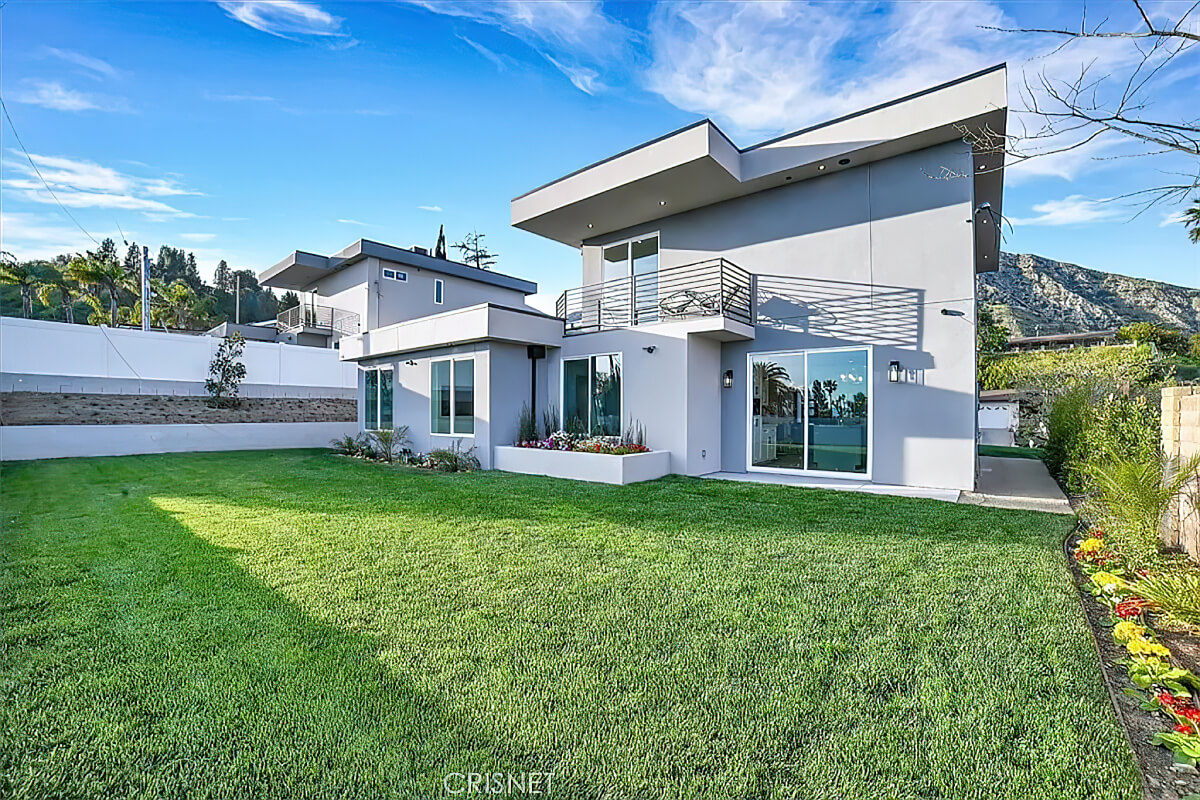
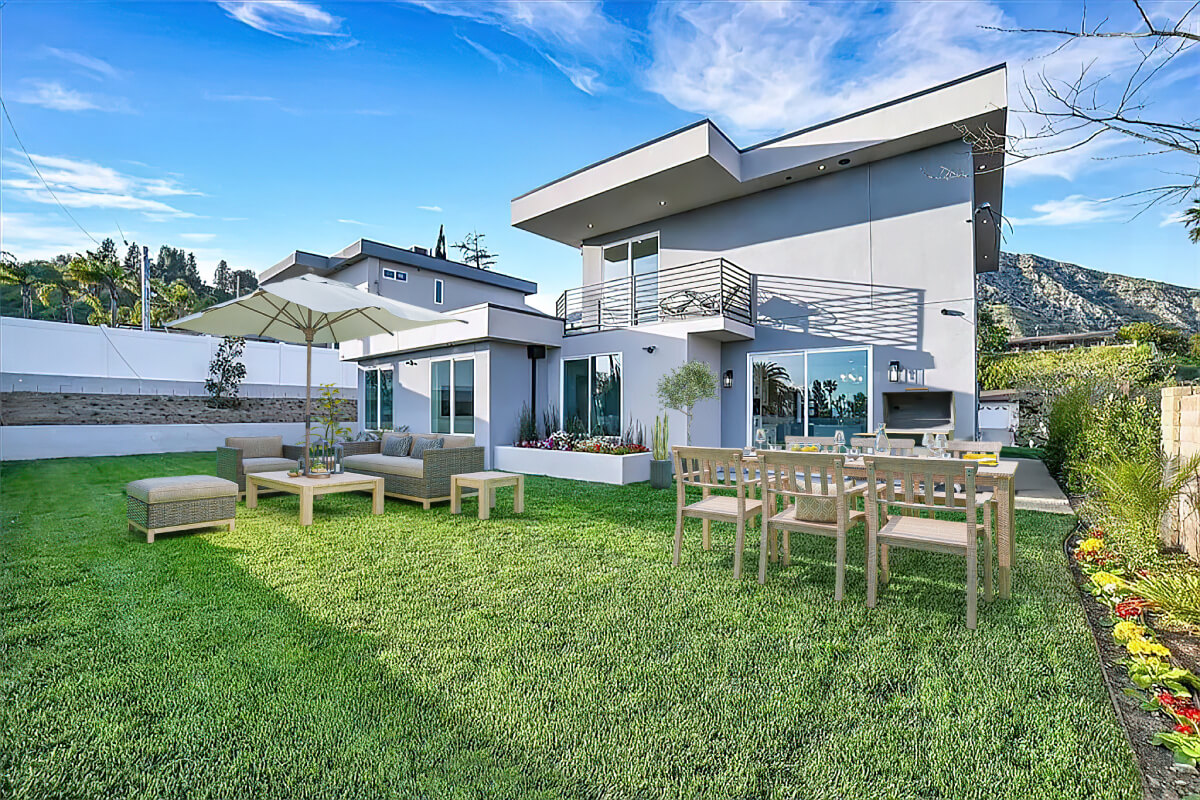
Don’t skip out on the bathroom
While you cannot change the tub or vanity, virtual staging may significantly improve the appearance of a drab bathroom. Add a vase of flowers or a couple of plants to provide color and warmth, or enhance illumination by placing a lamp on the vanity.
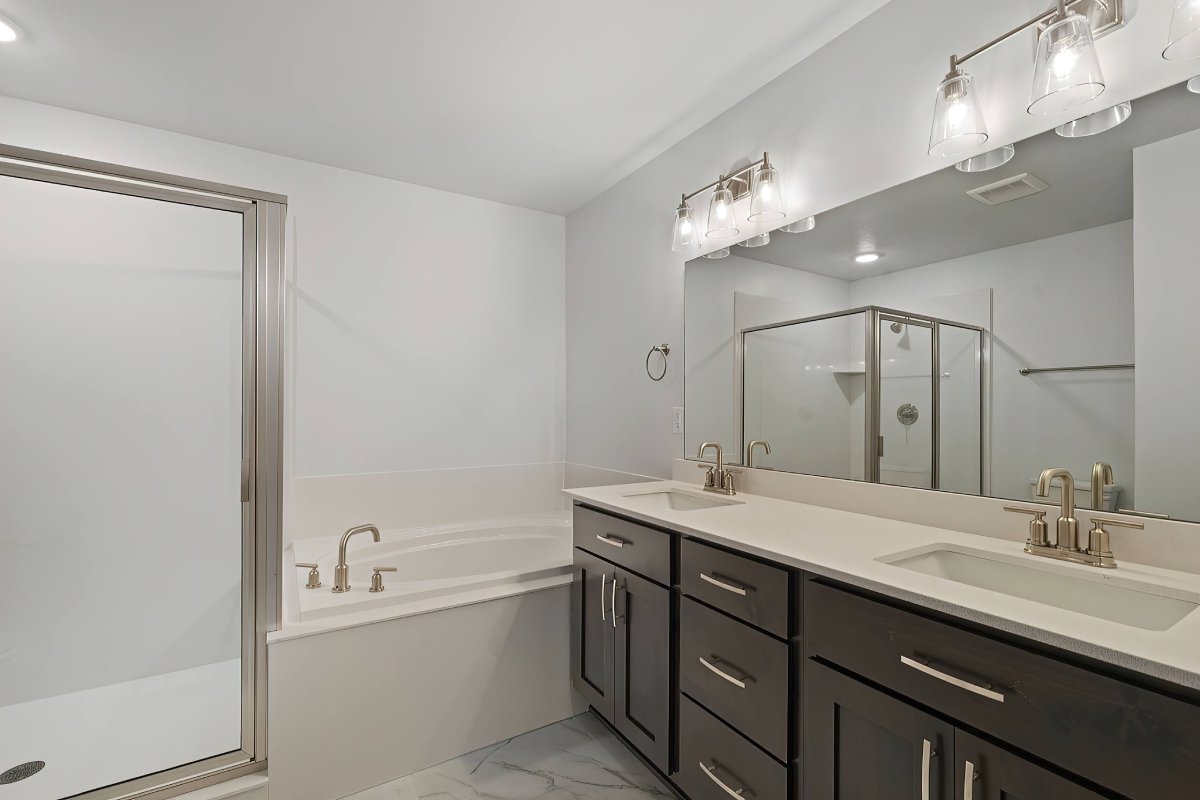

Don’t use low-resolution images
Avoid low-resolution images, as they will not result in a high-quality, virtually staged product or a clear, sharp photo that displays well online. To achieve the greatest results, you’ll need a photographer who can set up the proper lighting, photograph from an adequate height, and generate shots that accurately depict the floor and ceiling. You can also use the Internet to learn more about camera settings for real estate photography.
Do not list until the imagery is ready
Before you put your house up for sale, use the time and effort to stage it virtually. The first two weeks of an internet listing are the most crucial, so you must present your property when it looks its best. That is to say, when it’s staged virtually. Attractive, virtually arranged photographs that immediately grab a buyer’s eye can help you make a favorable first impression online.
Ask a professional to take the photos
This is not a “must,” but if you can do it, you’ll have much better photos. Poorly-taken photos may make furniture seem comical, exhibit lousy lighting, or even be out of scale or not positioned at the proper angle.
Virtual staging requires more time and effort than a few minutes. It takes significant knowledge of standard measurements, residential construction codes, typical heights of rooms and furniture, and other design aspects to produce the most realistic, alluring, and elegantly posed images. It also needs complex software applications.
Misconceptions About Virtual Staging
After learning the dos and dont’s of virtual staging, we can review some misconceptions about it. Although there are a dozen of such misconceptions, we only review the four main ones here.
Virtual staging is illegal
Every now and then, I hear someone asking, “is virtual staging legal?” and I see why they ask such a question. Virtual staging is mostly about adding features to properties that don’t exist in reality. So it’s logical to assume that it’s illegal. They argue that the buyers are somewhat deceived as they fall for something unreal.
The fact of the matter is that virtual staging is not illegal, but if you add appliances that the property doesn’t possess or don’t state that the photos are virtually staged when listing the house, you might be charged with fraud.
Virtual staging is expensive
Some also assume that virtual staging is expensive. This is because of the high amount that many photo editing companies charge for virtually staging a photo. Although no one says the service must be cheap, it shouldn’t be stupidly expensive either. Keep looking, and somewhere among those greedy companies, you’ll find affordable virtual staging services that suit your budget.
To order Virtual Staging at an unbeatable price click below!
virtual staging is only suitable for selling houses
Another widely-accepted assumption is that only those intending to sell their properties should be concerned with virtual staging. While virtual staging is highly related to listing and selling properties, it’s of greater application to agents and those learning internal design.
All agents bust, one way or another, advertise their services. To do so, they usually use flyers and brochures that give room for many pictures. Virtual staging can also be a great help to internal design specialists/students as it lets them come up with the right design for any property while sitting behind their computers.
Virtual staging works only with big properties
Virtual staging is not for big places only. It always allows for adding furniture and decor, no matter the size. As a matter of fact, if you don’t want buyers to think that your place is small, you should get it virtually staged, as space optimization can be reflected more easily through virtual staging.
Conclusion
In this article, we expressed the dos and don’ts of virtual staging. Virtual staging is an instrumental tool to have in your marketing strategy. However, virtual staging is not synonymous with virtual reality. Therefore, you must adhere to specific regulations and criteria.
To reiterate an important point, be cautious that doing more than merely adding furniture might generate legal and ethical complications. It’s critical that the images depict the house as prospective buyers would perceive it when they visit in person.
FAQ
Yes, you can start independently, but it doesn’t imply you’ll receive the perfect results. Sure, you’ll think of something, but it won’t be a sales-boosting real estate marketing photo. Creating such a work involves the expertise of digital artists, the availability of powerful computers, and cutting-edge software.
Revivoto offers virtual staging for as low as $18.99, and if you utilize any of our other services, we’ll consider offering you a discount.
Home buyers evaluate every aspect. They are looking at your property with new eyes, and a new set of furniture to stage the rooms offers the finest image. The living room, dining room, kitchen, master bedroom, guest room, and internal area are the most common locations to stage.


